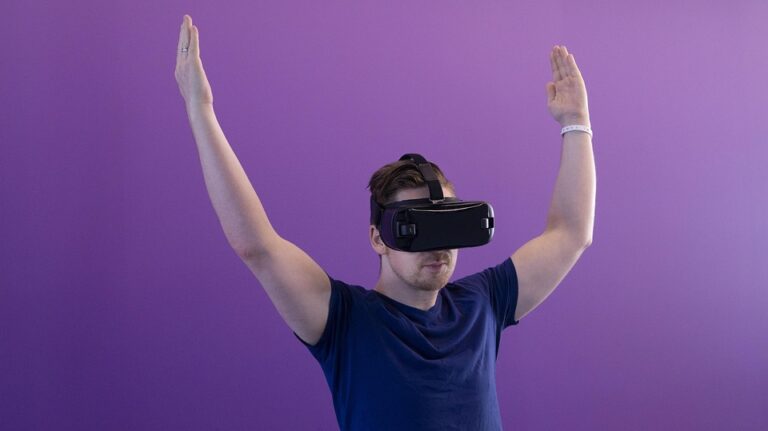How Augmented Reality Games are Changing Urban Exploration
Urban exploration has taken on a new dimension, thanks to the emergence and growth of Augmented Reality Games. These innovative games use technology to enhance real-world experiences, transforming cities into vibrant playgrounds. As urban explorers seek fresh adventures, AR games are redefining how we engage with our environments. In this article, we’ll explore how AR games are influencing urban exploration, backed by compelling statistics and engaging examples.
The Rise of Augmented Reality Games
Augmented Reality (AR) blends the physical and digital worlds to create immersive experiences. Players use their devices to interact with digital objects overlaid in real-world settings. This trend has rapidly gained momentum, particularly in urban areas.
Statistics Reflecting the Boom
-
According to a report by Statista, the AR gaming market is projected to reach approximately $198 billion by 2025. This growth highlights the increasing integration of technology in everyday life, particularly in urban settings.
- A survey by VentureBeat found that 72% of gamers believe that AR has the potential to revolutionize their gaming experiences, suggesting a shift in how players engage with their cities.
Accessibility and Engagement
AR games promote accessibility and social interaction, encouraging players to explore areas they may have otherwise overlooked. By blending gameplay with urban environments, these games create unique narratives rooted in local culture and history.
How AR Games Enhance Urban Exploration
Creating Interactive Experiences
One of the primary ways Augmented Reality Games change urban exploration is by transforming mundane spaces into dynamic environments.
-
Gamification of Exploration: Players complete quests, uncover secrets, and earn rewards by visiting various locations. This encourages a deeper engagement with the urban landscape.
- Social Interaction: Many AR games foster community through multiplayer options, allowing players to explore together. For example, Pokémon GO has inspired countless gatherings, making neighborhoods more vibrant and communal.
Real-world Examples
Consider Ingress, a popular AR game developed by Niantic. Players choose to be part of one of two factions, competing to control territory through real-world locations. Engaging with historical sites, parks, and public art installations, players learn more about their communities while competing for dominance.
This kind of gamified experience not only enhances the thrill of exploring but also deepens players’ connection to their surroundings.
The Role of Technology
-
Location-Based Services: AR games utilize GPS technology to provide location-specific challenges, turning cities into interactive maps filled with game objectives.
- Smartphone Accessibility: As smartphones become ubiquitous, players can easily access these Augmented Reality Games, making urban exploration more appealing and inclusive.
Challenges and Considerations
While the potential of AR games is vast, developers and city planners must address several challenges:
Technological Limitations
Despite advances in AR technology, issues such as connectivity, battery life, and device compatibility can affect gameplay. Ensuring smooth experiences across diverse mobile devices is crucial for broader adoption.
Urban Planning and Privacy
As players frequent public spaces, urban planners must consider how these games influence foot traffic and the privacy of historical sites or private properties. Balancing engagement and preservation is essential to maintaining the integrity of urban environments.
Future Prospects of AR in Urban Exploration
The future of Augmented Reality Games in urban exploration looks promising. With continual advancements in technology and increasing urbanization, gamers will continue to seek novel experiences.
Enhanced Content with AR
Future developments may include more sophisticated AI integration, allowing for deeper narrative experiences that adapt to players’ actions and decisions. Imagine exploring a city where the landscape changes based on the history you learn or the connections you make!
Expansion of Gamified Tourism
As cities recognize the benefits of AR gaming, we could see a rise in AR-based tourism. Cities might create designated paths that highlight cultural and historical significance while integrating AR challenges along the journey.
Conclusion
Augmented Reality Games are revolutionizing urban exploration by making it more interactive, engaging, and accessible. As technology continues to evolve, these games will become integral to how we experience our cities. From fostering community engagement to enhancing local knowledge, the impact of AR on urban exploration is profound.
For more insights into technology and culture, check out our articles on the future of gaming and urban culture. For external perspectives, visit Statista and VentureBeat for industry trends and data.
Suggested Images
- Image 1: An AR game being played in an urban setting (Alt text: Augmented Reality Games transform city exploration)
- Image 2: A group of friends exploring a city through an AR game (Alt text: Gamified urban exploration with Augmented Reality Games)


